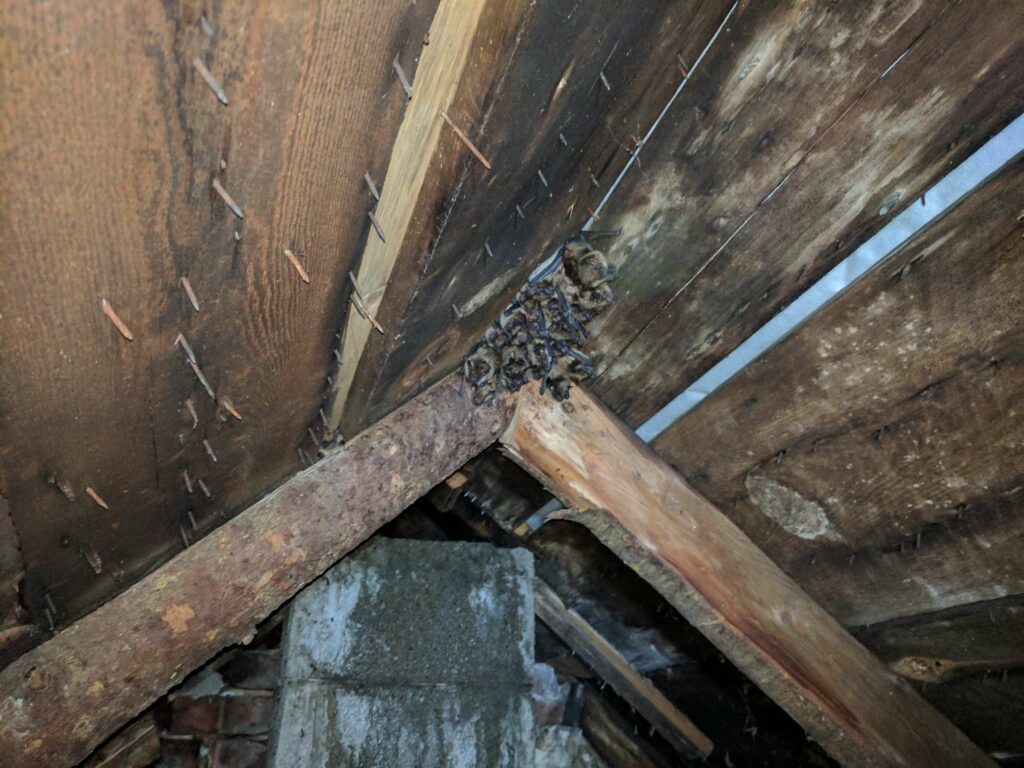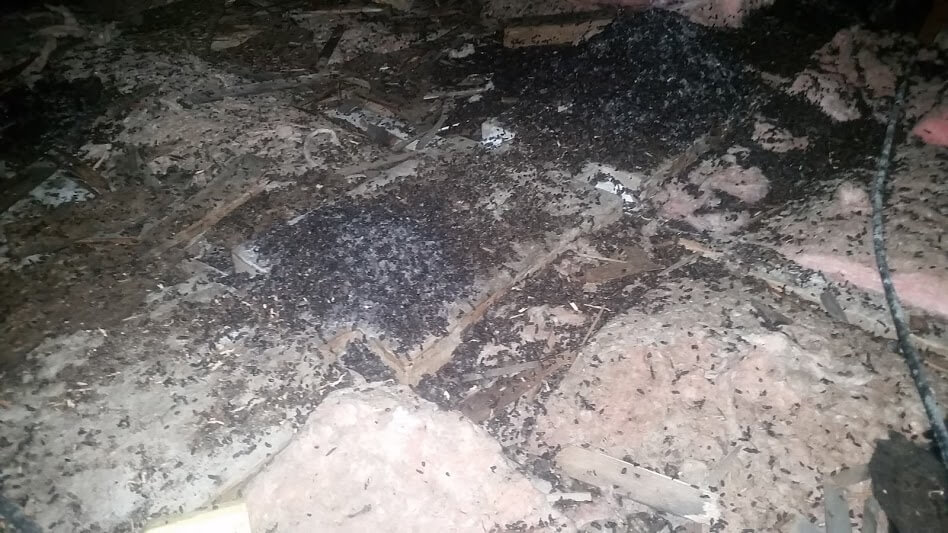Hibernation. Oh, what a lovely thought! Wouldn’t we all love to be able to go to sleep for an extended period of time, waking up fully rested and alert to warm weather? Unfortunately for humans, we do not have the ability to hibernate. However, there are many creatures that do, including bats. Bats are animals that hibernate during the winter months and will use your home’s attic to do it. In Ontario, big brown bats and little brown bats can use the attic space of a home as their resting place. Learn more about these hibernation habits so that you can avoid bats taking over your home during the winter season.

Bats huddled together inside an attic
Hibernation of Bats
Most people think that bats live only in caves and that this is where they hibernate. However, that is not true. The two species of bats mentioned above tend to colonize houses in Ontario and will be a nuisance. During the winter months, little brown bats will use caves and abandoned mines for hibernation but are known to live in houses during other seasons. Big brown bats are hearty enough to survive winter inside houses and hibernate in walls and attics to stay comfortable and safe. Of the two, big brown bats are more likely to live inside houses.

Bat droppings piled on attic insulation
Wakey, Wakey
When thinking about hibernation, most homeowners think that it involves constant sleep. However, that is not true. Big brown bats will wake up every few weeks and fly around the attic or in the walls of your home. Bats are very sensitive when it comes to temperature. An extreme swing in temperature during winter can lead to bats to wake up from hibernation to look for a more comfortable place inside the home.
We often get calls from homeowners who have a bat in the living space of their home during winter immediately following a dramatic change in temperature during winter. This is usually a bat that has got lost inside the walls looking for a more comfortable temperature and emerged accidently into the living space as a result.
In Ontario, long winters can result in bats hibernating for as long as six months. They are in a deep sleep and will survive on very little stored fat. They drop their body temperature and will slow down their metabolism so they can last throughout the period of slumber. By the spring and the arrival of insects to eat, they awake and this is the perfect time to begin bat removal.
If you have seen bats in your home, either flying or in deep sleep, leave the removal process to the experts. Bats can carry disease including rabies and can be dangerous in certain situations. Avoid any problem in the home by contacting bat removal experts and having your home assessed. After the initial inspection, the wildlife technician can provide a bat removal service plan that will be humane and see your home free of bats.
Preventative maintenance measures including closing off entry points will need to be completed so that you do not have to worry about bats coming back into your home in the future. At Skedaddle Humane Wildlife Control, comprehensive bat removal services are provided that will ensure your home is free of the infestation and that you are no longer subject to bats that can be harmful to the home or your family members. Contact the office today to schedule an appointment if you think that bats are living in your home.



